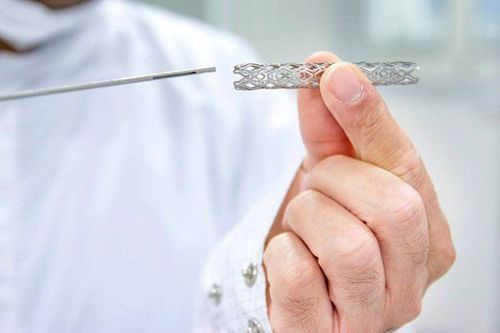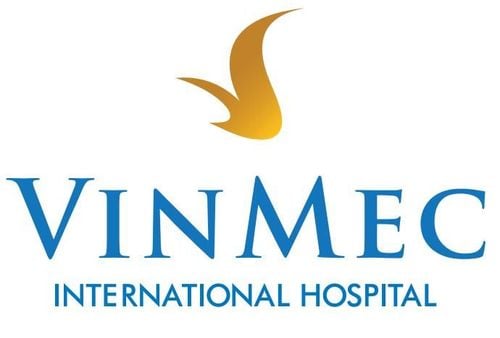This is an automatically translated article.
Injury to the superficial femoral artery due to narrowing and occlusion of the artery is a common cause of claudication, which, if not treated early, can lead to amputation. Intervention of the superficial femoral artery is an effective procedure in the treatment of this pathology.
1. Injury to the superficial femoral artery
Injury to the superficial femoral artery includes narrowing and occlusion of the artery, which is the most common cause of claudication. Narrowing or occlusion of the superficial femoral artery with occlusion of the subclavian arteries (anterior tibial, tibialis, posterior tibialis) may lead to severe lower extremity ischemia and manifestations of disorganization such as persistent ulceration, necrosis, and necrosis. limb, if left untreated, can lead to amputation.
Classification of superficial femoral artery lesions according to the TASC II Inter-Atlantic Consensus Conference:
TASC A: Isolated stenosis of the superficial femoral artery or popliteal artery less than 3 cm TASC B: Isolated stenosis of 3 to 10 cm in length , without extension to the distal popliteal artery Narrowing with severe calcification more than 3 cm in length Multiple occlusion or stenosis, each less than 3 cm long Isolated or multiple stenosis, discontinuing with the tibial artery TASC C: Solitary stenosis or obstruction greater than 5 cm in length Multiple stenosis or occlusion, each 3–5 cm long, with or without severe calcification. TASC D: Complete occlusion of the common femoral artery or the superficial femoral artery, or complete occlusion of the popliteal artery up to the site of division of the tibialis body.
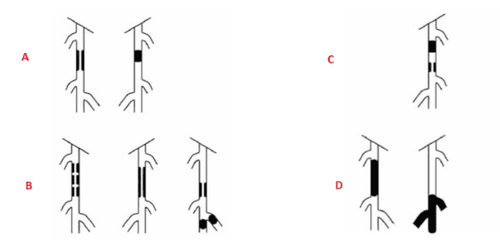
Phân loại tổn thương động mạch đùi nông theo TASC
2. Superficial femoral artery intervention technique
Endovascular revascularization of the superficial femoral artery was first conducted in 1964. Later, angioplasty technique was developed, this technique helps to remove the atherosclerotic layer and improve the vessel area. blood. However, balloon angioplasty alone carries the risk of dissection of the vascular endothelium and obstruction of outflow. In addition, with prolonged diffuse lesions, calcified lesions, there is a recoil phenomenon immediately after balloon angioplasty. The remedy in these cases is stenting.
Indications for superficial femoral artery intervention in patients with moderate to severe intermittent claudication, especially in limb ischemia at rest and tissue disorganization. Injury to the superficial femoral artery is often accompanied by stenosis of other vessels, especially below the knee. Therefore, sometimes superficial femoral artery revascularization may not immediately improve the patient's symptoms.
When there is an indication for revascularization of the extremities, choose the treatment according to the classification of TASC II. Most cases of TASC A and B lesions are catheterized. TASC C can be percutaneous or surgical. TASC D lesions are often indicated for surgery to bridge. If the patient is inoperable (due to the anatomical features of the lesion or comorbid medical conditions), percutaneous reperfusion or medical therapy may be considered. Indications for amputation in patients with severe limb ischemia unable to reperfusion. Amputation can reduce pain and prevent the risk of toxic infection in patients with ulceration, severe limb necrosis, and disorganization.
3. How is superficial femoral artery intervention performed?
3.1 Opening the way to blood vessels
The most common way to enter is the common femoral artery, in some cases the brachial artery may be used. If downstream intervention fails, access to the popliteal, anterior tibial, or dorsal artery can be opened for retrograde intervention. The best is Doppler ultrasound-guided angiography.
3.2 Femoral angiography
The catheter is inserted into the common femoral artery on the affected side for angiography. The angiographic technique used is coding subtraction angiography (DSA), which provides images with higher resolution and removes non-vascular parts (bones, soft tissues) to reveal lesions. better love.
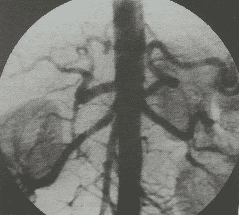
Chụp mã hóa xóa nền giúp chụp động mạch đùi
3.3 Pass a guidewire through the lesion
There are two main techniques for inserting leads through superficial femoral artery lesions: intravascular and subendothelial interventions. Intravascular intervention is the preferred technique to use first. The advantage of this technique is that it preserves blood vessels and side branches, and causes less dissection of the vessel wall. However, this technique may face many difficulties if the lesions are long-standing, calcified, and at the same time increase the risk of atherosclerotic plaque detachment and thrombosis causing distal embolism. The alternative when intravascular techniques fail is subendothelial intervention.
3.4 Ballooning
The balloon is a high-pressure ball, the pressure of the balloon can be increased very high without the size of the balloon expanding too much. As a result, it can restore the area of the vascular lumen while reducing the risk of causing damage to the blood vessel wall. Currently, the most common technique for interventional superficial femoral artery is angioplasty first, followed by stenting if necessary.
The advantage of balloon angioplasty is that the procedure is simple, low-cost, and protects the lateral branches and collateral circulation while ensuring lower extremity perfusion, avoiding the need to place foreign devices. in the lumen, thereby reducing the risk of thrombosis and endothelium hyperplasia. Compared with stenting, if there is restenosis after balloon angioplasty, it is still possible to perform bypass surgery or percutaneous intervention, which is difficult to do with stenting.
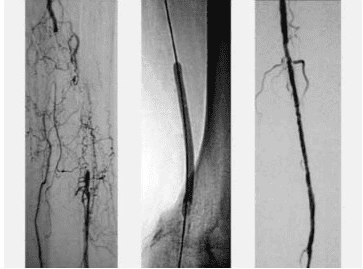
Nong bóng trong can thiệp động mạch đùi nông
Superficial femoral artery stenting also has advantages such as avoiding early complications (residual vascular stenosis, vascular dissection after balloon angioplasty). However, the disadvantage of this technique is that stents placed in the femoral artery are prone to fractures and eye cracks because the superficial femoral artery bears a lot of force during the work of the thigh muscles. Now, new-generation stents, with better designs and materials, have partially reduced this risk.
Recent studies show that drug-eluting balloons and drug-eluting stents are more effective than balloon angioplasty and conventional stenting. Drug-coated balloons reduce treatment costs and improve quality of life for patients.
In summary, femoral artery intervention is an effective treatment method in cases of occlusion and stenosis of the superficial femoral artery, especially in patients with claudication or severe limb ischemia. The procedure includes steps: opening the way to the blood vessel, angiography to accurately assess the lesion, inserting the wire through the lesion, balloon angioplasty.
Vinmec International General Hospital is a general hospital with the function of examining and treating cardiovascular and arterial diseases. At Vinmec, we have also performed endoscopic examination, diagnosis and treatment with modern medical methods for cardiovascular diseases, which not only brings high efficiency but also minimizes complications of recurrent disease. The great success is because Vinmec is always fully equipped with modern facilities, examination and treatment procedures are performed by a team of well-trained, experienced doctors with many utility medical services.
To register for medical examination and treatment at Vinmec International General Hospital, you can contact Vinmec Health System nationwide, or register online HERE.




